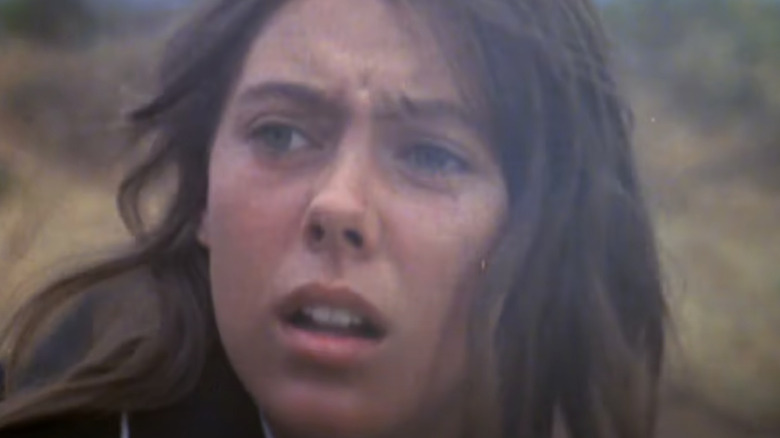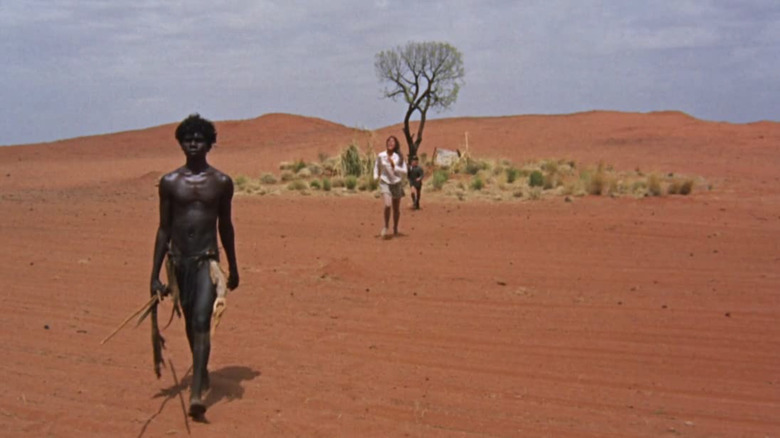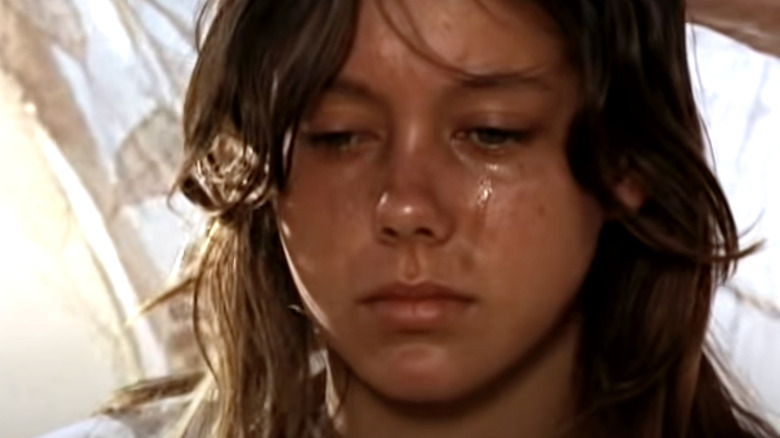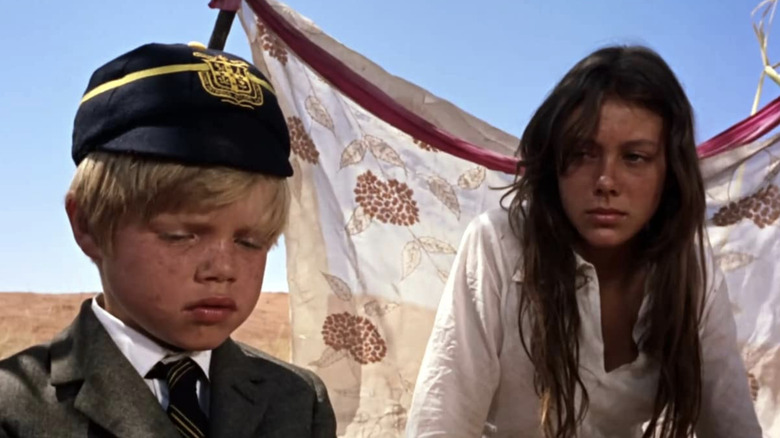The Ending Of Walkabout Explained
Nicolas Roeg's 1971 film "Walkabout" is one of the famed filmmaker's most mysterious and vexing movies — and when a director's filmography includes such enigmas as "Don't Look Now" and "The Man Who Fell to Earth," that's saying something. Based on the 1959 novel of the same name, "Walkabout" follows two children, a 14-year-old girl (Jenny Agutter) and a six-year-old boy (the director's son, Luc Roeg). The siblings must fend for themselves after they are stranded in the Australian outback, guided only by a young Aboriginal man played by David Gulpilil.
What could have been a simple adventure tale in another director's hands becomes an elliptical, mysterious journey through Roeg's lens. Though it was his debut as a solo feature film director (having co-directed "Performance" with Donald Cammell the year prior, per IMDb), Roeg fills his movie with what would go on to become his signature experimental editing style and a minimum of spoken dialogue and exposition. These creative decisions can make "Walkabout" a bit of a head-scratcher for some viewers, even as it has become a real classic in the decades since it was released, receiving mostly positive reviews from critics and audiences (per Rotten Tomatoes) and even being selected for inclusion in the Criterion Collection.
Walkabout shows a yearning to go back to nature
The emotional power of "Walkabout" all comes together in its final minutes. The adventure and tragedy of the film's plot are played out, with Girl (Jenny Agutter) and White Boy (Luc Roeg) learning to survive in the Australian wilderness from David Gulpili's character after a picnic with their father goes horrifyingly awry. By the final act, the two young protagonists have made it out of the wilderness, and back to their modern world.
Some unspecified period of time has passed, as Girl is now evidently a married adult. She prepares a meal at the kitchen counter, just as her mother (Hilary Bamberger) does at the beginning of the film. Her husband drones on about his job's office politics, but Girl's eyes are unfocused. She looks off into the distance, and we see that she remembers a particularly happy time during her wilderness adventure, bathing under a waterfall and playing with her younger brother and their guide through the bush. The images are powerful, but they are enhanced significantly by John Barry's gorgeous score, which is almost sad and beautiful enough to depict the grown-up Girl's bittersweet longing all by itself.
Music and images like this transcend a concrete explanation, but the effect on the viewer is one that hits at a core, almost primal level. Without explicitly stating it, this sequence at the end of "Walkabout" reminds viewers that a connection to the natural world is possible and, if indulged, it can profoundly change every aspect of your being. If you've ever felt stifled by the monotony of modern life and craved something more, this ending will almost certainly resonate on some level.
The violence in Walkabout has a purpose, too
Nicolas Roeg is known for his chronologically fractured approach to editing (seen in "Don't Look Now" and "The Man Who Fell to Earth," among others), so it's natural that to understand the ending of "Walkabout," you have to remember the beginning. The film opens in a family's apartment in Sydney, Australia. Their surroundings are luxurious, but the sequence has a nervous, claustrophobic feeling. The mother (Hilary Bamberger) seems vaguely anxious and disconnected, while the father (John Meillon) is poised for a much more serious and violent breakdown that we'll soon see. The father loads the kids in the car and starts driving, but it soon becomes evident that all is not well. In the middle of the Australian bush, he pulls out a gun, starts shooting at his children, then sets fire to the car and shoots himself through the head.
In typical Roeg fashion, this horrifying turn of events doesn't get any explanation. The audience is trusted to understand that the father has suffered a mental breakdown and is trying to murder his own family, something that Stanley Kubrick would build an entire horror film around a few years later. But here, the opening sequence serves to place our main characters in the main plot. This terrible explosion of violence supports one of the themes of "Walkabout": There is something about modern life that can be just as dangerous as any wilderness.
The ending of Walkabout mirrors with the beginning
The danger of the Girl (Jenny Agutter) and White Boy's (Luc Roeg) adventure, as depicted in "Walkabout," is only part of the story. The film shows the two nearly dying of thirst and exposure, surviving only when the Aboriginal young man (David Gulpilil) takes them under his wing and shows them how to live off the land, and goes on to reveal the children get more in touch with their authentic selves under the guidance of their mentor. The moments of danger are counterbalanced by moments of beauty and joy. One conclusion you could draw is that the safety and comfort of the modern world can have a numbing effect on one's ability to truly feel alive.
Once the siblings finally make it through their wild adventure, the ending shows Girl all grown up, living in the same kind of apartment that her mother once did, nostalgically yearning for her time in the dangerous but beautiful wilds of Australia. The ending echoes the beginning, with the Girl ending up in the same place her mother was in, but ostensibly dealing with an entirely new range of emotions about her situation. Although most of us aren't going to sacrifice air conditioning or running water of our own volition, the idea is still a fascinating one, nimbly expressed thanks to Nicolas Roeg's early mastery of film form.



